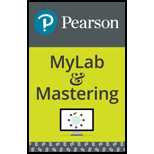
Concept explainers
(a)
Interpretation:
A balanced net ionic equation for the acid-base reaction,
Concept introduction:
Answer to Problem 74E
A balanced net ionic equation for the acid-base reaction,
Explanation of Solution
The chemical reaction is given below.
The balanced chemical equation is given below.
It is balanced as the number of atoms on each side is the same.
In the above total ionic equation,
A balanced net ionic equation for the given acid-base reaction has been rightfully stated.
(b)
Interpretation:
A balanced net ionic equation for the acid-base reaction,
Concept introduction:
Chemical reactions are represented by chemical equations. In a chemical equation, the reactants are represented on the left of the arrow while the products are represented on the right of the arrow. The chemical equation representing the reaction in which only the species actually participating are written is termed as an ionic reaction.
Answer to Problem 74E
A balanced net ionic equation for the acid-base reaction,
Explanation of Solution
The chemical reaction is given below.
It is balanced as the number of atoms on each side is the same.
In the above total ionic equation, there are no spectator ions. Therefore, the net ionic equation is given below.
A balanced net ionic equation for the given acid-base reaction has been rightfully stated.
Want to see more full solutions like this?
Chapter 14 Solutions
EP INTRODUCTORY CHEM.-MOD.MASTERINGCHEM
- Follow the directions of Question 19 for the following acids: (a) hypochlorous acid (b) formic acid, HCHO2 (c) acetic acid, HC2H3O2 (d) hydrobromic acid (e) sulfurous acidarrow_forwardClassify each of the following as a strong or weak acid or base. a NH3 b HCNO c Mg(OH)2 d HClO3arrow_forwardWrite two BrnstedLowry acid-base reactions and show how they represent proton-transfer reactions.arrow_forward
- A Liquid HF undergoes an autoionization reaction: 2HFH2F++F (a) Is KF an acid or a base in this solvent? (b) Perchloric acid, HCIO4, is a strong acid in liquid HF. Write the chemical equation for the ionization reaction. (c) Ammonia is a strong base in this solvent. Write the chemical equation for the ionization reaction. (d) Write the net ionic equation for the neutralization of perchloric acid with ammonia in this solvent.arrow_forwardWhich of the following is not identified as a strong base?arrow_forwardThe following molecular equation represents neutralization reaction of acid and base. Write the equation in total ionic form, then write the net ionic equation. Water is the only substance that does not dissociate. HBr(aq)+LiOH(aq) --> LiBr(aq) + H2O(l)arrow_forward
- complete and balance each of the following equations for acid base reactions HClO4 (aq) + NaOH (aq) ------>arrow_forwardThe OH⁻ concentration in an aqueous solution at 25 °C is 8.3 × 10⁻³. What is [H⁺]?arrow_forwardWhich of these is NOT an example of a strong base? O All of these are strong bases Ba(OH)2 ONH4OH O Sr(OH)2 O Ca(OH)2arrow_forward
- Acidity of a solution is determined by the concentration H of hydrogen ions in the solution (measured in moles per liter of solution). Chemists use the negative of the logarithm of the concentration of hydrogen ions to define the pH scale, as shown in the following formula. pH = -log (H) Lower pH values indicate a more acidic solution. (a) Normal rain has a pH value of 5.6. Rain in the eastern United States often has a pH level of 3.8. How much more acidic is this than normal rain? (Round your answer to two decimal places.) 63.10 times as acidic as normal rain (b) If the pH of water in a lake falls below a value of 5, fish often fail to reproduce. How much more acidic is this than normal water with a pH of 5.6? (Round your answer to two decimal places.) * times as acidic as normal waterarrow_forwardFill in the left side of this equilibrium constant equation for the reaction of hypochlorous acid (HC1O) with water. 1 = K, 음arrow_forwardAnswer the following by selecting all correct answers. (a) Dynamic equilibrium O is a condition where two opposing processes are occurring at the same rate. O can only occur in water. O is used to describe what happens when weak acids or weak bases are added to water. O is used to describe what happens when strong acids or strong bases are added to water. (b) What will happen if acetic acid (HC2H3O2) is added to water?arrow_forward
 Chemistry: Principles and ReactionsChemistryISBN:9781305079373Author:William L. Masterton, Cecile N. HurleyPublisher:Cengage Learning
Chemistry: Principles and ReactionsChemistryISBN:9781305079373Author:William L. Masterton, Cecile N. HurleyPublisher:Cengage Learning Chemistry: Principles and PracticeChemistryISBN:9780534420123Author:Daniel L. Reger, Scott R. Goode, David W. Ball, Edward MercerPublisher:Cengage Learning
Chemistry: Principles and PracticeChemistryISBN:9780534420123Author:Daniel L. Reger, Scott R. Goode, David W. Ball, Edward MercerPublisher:Cengage Learning General Chemistry - Standalone book (MindTap Cour...ChemistryISBN:9781305580343Author:Steven D. Gammon, Ebbing, Darrell Ebbing, Steven D., Darrell; Gammon, Darrell Ebbing; Steven D. Gammon, Darrell D.; Gammon, Ebbing; Steven D. Gammon; DarrellPublisher:Cengage Learning
General Chemistry - Standalone book (MindTap Cour...ChemistryISBN:9781305580343Author:Steven D. Gammon, Ebbing, Darrell Ebbing, Steven D., Darrell; Gammon, Darrell Ebbing; Steven D. Gammon, Darrell D.; Gammon, Ebbing; Steven D. Gammon; DarrellPublisher:Cengage Learning


